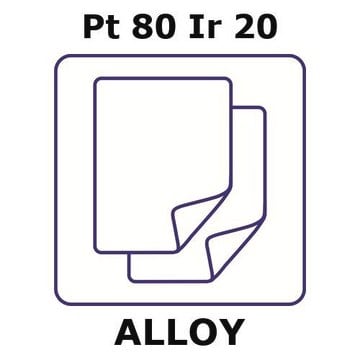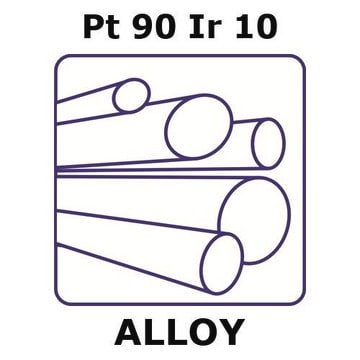GF57333573
Silber
rod, 100mm, diameter 8.0mm, as drawn, 99.95+%
Synonym(e):
Silver, AG007938
About This Item
Empfohlene Produkte
Assay
99.95%
Form
rod
Hersteller/Markenname
Goodfellow 573-335-73
Widerstandsfähigkeit
1.59 μΩ-cm, 20°C
L × Durchm.
100 mm × 8 mm
bp
2212 °C (lit.)
mp (Schmelzpunkt)
960 °C (lit.)
Dichte
10.49 g/cm3 (lit.)
SMILES String
[Ag]
InChI
1S/Ag
InChIKey
BQCADISMDOOEFD-UHFFFAOYSA-N
Allgemeine Beschreibung
Rechtliche Hinweise
Lagerklassenschlüssel
13 - Non Combustible Solids
WGK
WGK 3
Flammpunkt (°F)
Not applicable
Flammpunkt (°C)
Not applicable
Analysenzertifikate (COA)
Suchen Sie nach Analysenzertifikate (COA), indem Sie die Lot-/Chargennummer des Produkts eingeben. Lot- und Chargennummern sind auf dem Produktetikett hinter den Wörtern ‘Lot’ oder ‘Batch’ (Lot oder Charge) zu finden.
Besitzen Sie dieses Produkt bereits?
In der Dokumentenbibliothek finden Sie die Dokumentation zu den Produkten, die Sie kürzlich erworben haben.
Unser Team von Wissenschaftlern verfügt über Erfahrung in allen Forschungsbereichen einschließlich Life Science, Materialwissenschaften, chemischer Synthese, Chromatographie, Analytik und vielen mehr..
Setzen Sie sich mit dem technischen Dienst in Verbindung.





